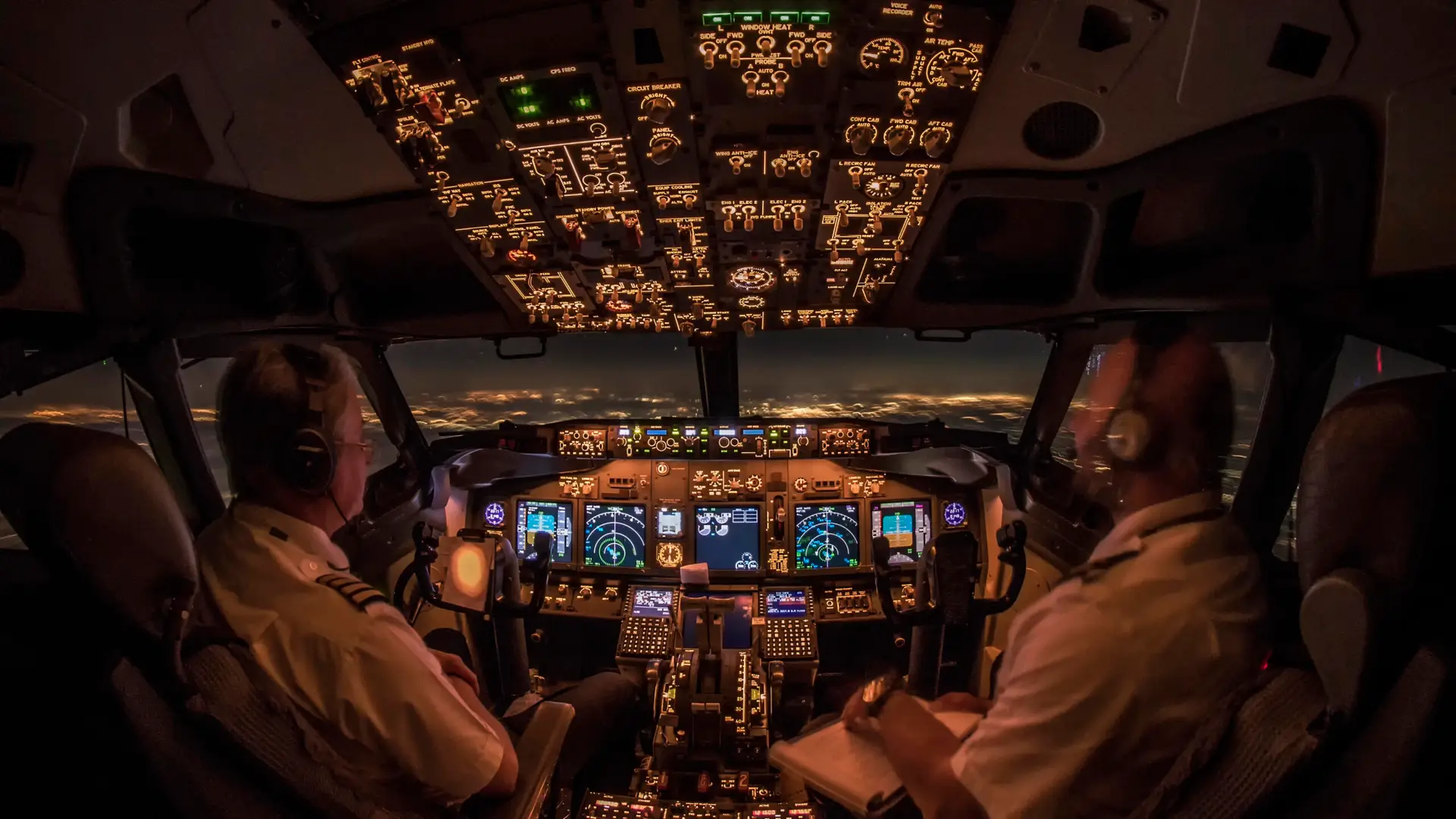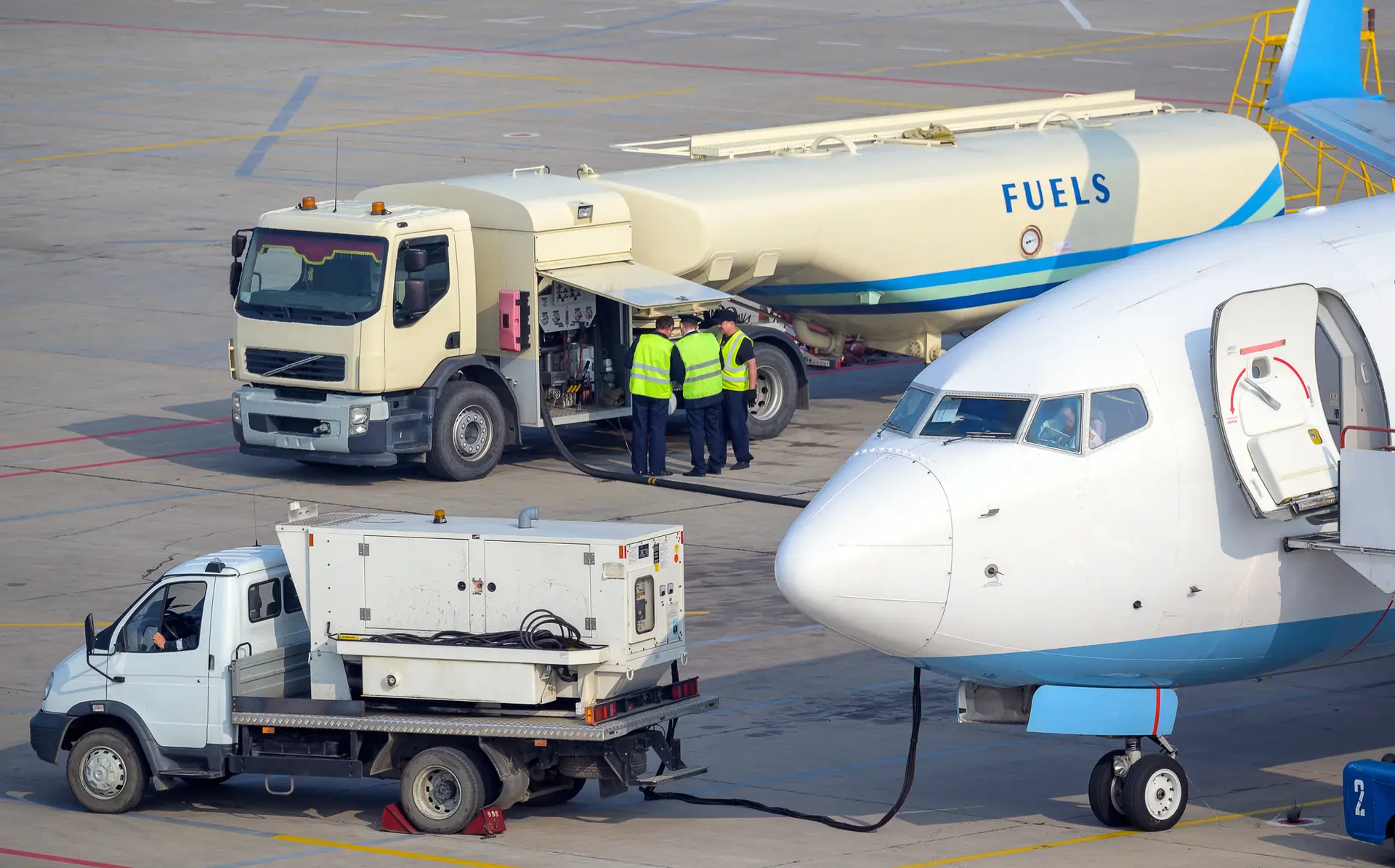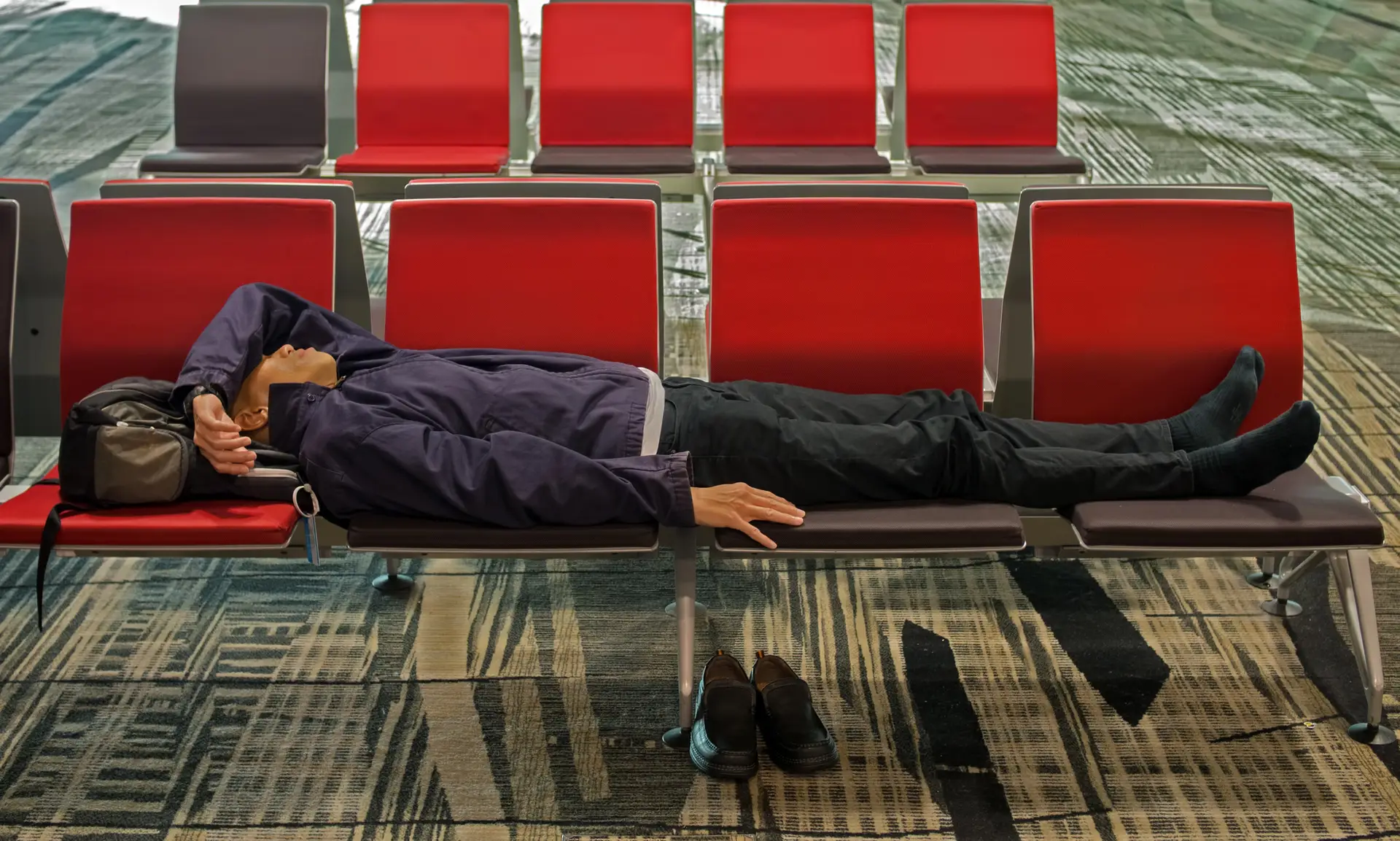Private Pilot Training: What You Need to Know
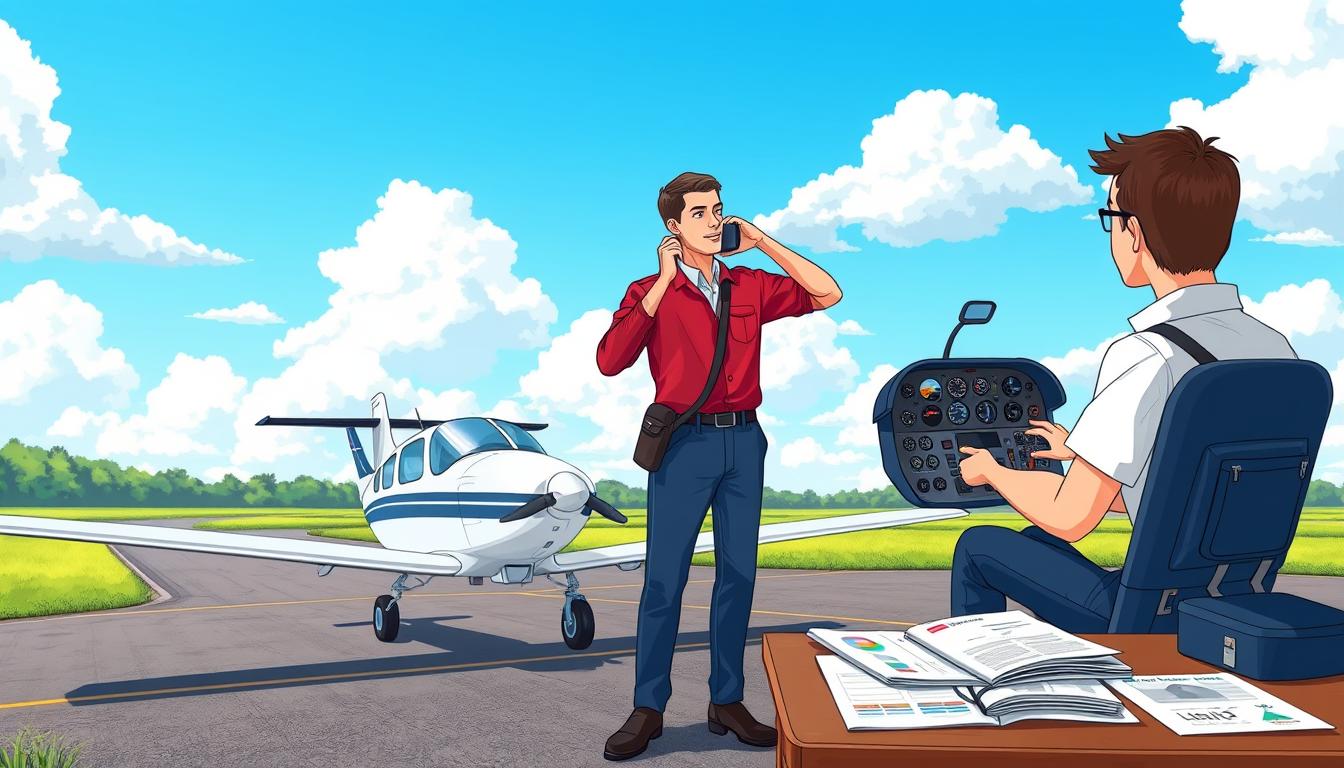
- aviatorpro_6714
Private pilot training is a key step for those who want to become pilots. It’s for people who want to fly for personal reasons. Getting a Private Pilot License (PPL) is hard but very rewarding. It turns aviation fans into skilled pilots who can fly different planes.
This training includes both classroom and flying lessons. Students learn about navigation, emergency actions, and flying techniques. It’s important to know the effort needed to get this certification. With hard work, you can get your PPL in 4 to 12 months.
Key Takeaways
- Private pilot training is essential for pilot certification.
- A minimum of 40 flight hours is required for a PPL.
- Individuals can typically complete training for a PPL in 4 to 12 months.
- Ground school covers topics like navigation and emergency procedures.
- A commitment to regular practice is key for keeping skills sharp.
- Getting a PPL opens up many flying opportunities.
- Getting the right medical checks is a big part of the process.
What is Private Pilot Training?
Private pilot training is a key step for those who dream of flying. It teaches the skills and knowledge needed for a Private Pilot Certificate. This certificate lets pilots fly for fun, without getting paid. It’s a big step towards becoming a pilot.
The path to getting a pilot certificate includes learning theory and gaining flying experience. These aviation courses are essential for success.
Definition and Overview
A Private Pilot License (PPL) is the top pilot certification in the U.S. It requires at least 40 hours of flight time. This time is split into different parts to ensure pilots are well-rounded.
| Type of Flight Time | Hours Required |
|---|---|
| Flight training from authorized instructor | 20 hours |
| Solo flight | 10 hours |
| Cross-country flight training | 3 hours |
| Night flight training | 3 hours |
Night flight training includes special tasks. Pilots must fly over 100 nautical miles and complete takeoffs and landings. These tasks prepare pilots for flying at night.
Benefits of Becoming a Private Pilot
Many people dream of becoming private pilots. They are drawn by the freedom and career growth it offers. Private pilots can travel anywhere they want, without the limits of commercial airlines. The perks of private pilot training go beyond just fun.
Personal Freedom and Flexibility
Getting a private pilot license brings personal freedom. Pilots can make their own travel plans, whether it’s a spontaneous trip or a well-planned adventure. They can fly whenever they want, saving time and enjoying more flexibility. Some key benefits include:
- Control over travel itineraries
- Convenience of direct flights to remote locations
- Opportunity to conduct charity flights or assist with transportation needs
Travel and Adventure
Flying adds excitement to travel. Private pilots enjoy unique adventures, exploring different landscapes from the air. They can visit places like Canada, Mexico, and The Bahamas. Travel becomes an experience, not just a destination. Consider this:
- Access to the world’s largest fly-ins, like EAA AirVenture and Sun-n-Fun
- Potential for cost savings on last-minute trips compared to commercial air travel
- A chance to fly to engaging locations not easily accessible by commercial airlines
In conclusion, becoming a private pilot offers many benefits. It enhances personal freedom, career opportunities, and the joy of travel and adventure. This journey is rewarding, making it a goal worth striving for for those who love to fly.
Eligibility Requirements for Private Pilot Training
For those interested in private pilot training, knowing the eligibility requirements is key. Age, health, education, and language skills all matter. They are important for getting a pilot’s certificate.
Age and Health Conditions
To get a private pilot certificate, you must meet certain age rules. You need to be at least 17 years old for most aircraft. But, if you want to fly gliders or balloons, you can start at 16.
Your health is also important. You’ll need a third-class medical certificate. This is given by an aviation medical examiner to check your physical and mental health.
Educational Background
Having a good education helps a lot in pilot training. You don’t need a specific degree, but knowing basic math and physics is helpful. These subjects make learning flight principles easier.
It’s also good to study Air Law, Navigation, and Aircraft Systems. This prepares you for the knowledge tests you’ll need to pass.
Language Proficiency
In aviation, being able to communicate well is essential. You must be good at reading, writing, speaking, and understanding English. This ensures you can follow flight instructions and talk clearly with air traffic control and others.
The Private Pilot Training Process
The private pilot training process is detailed and covers both theory and practical skills. It’s vital for those who want to fly for personal or professional reasons. The process includes ground school and flight training, both key to becoming a skilled pilot.
Ground School Overview
Ground school is the starting point for aspiring pilots. It teaches essential topics like:
- Aerodynamics
- Weather theory
- Navigation techniques
- Aircraft systems
- Federal Aviation Regulations
Students can learn through in-person classes, online, or home study. This flexibility helps students fit their learning into their busy lives. It makes learning complex topics easier.
Flight Training Breakdown
After mastering theory, students start flight training. Here, they apply what they’ve learned in real flights. Flight training includes:
- Minimum of 40 hours of flight time for FAA Part 61 or 35 hours for Part 141
- Various maneuvers like takeoffs, landings, and emergency procedures
- Personalized lessons from a certified flight instructor
Students must also complete cross-country flights. These are at least 50 miles from the starting airport. This helps them practice navigation and decision-making.
Duration of Training
The time it takes to complete private pilot training varies. Full-time students might finish in three months. Part-time students usually take 4 to 6 months. The time depends on:
- How often lessons are taken
- The number of flight hours
- Weather conditions
Students typically log about 75 hours of flight time. But, only a small percentage meet the FAA’s 40-hour requirement. So, the training often takes longer than expected.
Finishing the private pilot training process prepares pilots for flying. It’s a big step towards more aviation education or personal flying.
Choosing a Flight School
Finding the right flight school is key for good private pilot training. There are many options out there, each suited to different needs. Knowing what to look for and checking credentials is important for a strong start in your education.
Types of Flight Schools
Flight schools usually fall into two main types:
- Part 61 Flight Schools: These are smaller and offer a more flexible schedule. They’re great for those who want a personal touch in their training.
- Part 141 Flight Schools: These are bigger and follow a strict curriculum. They’re best for those serious about becoming professional pilots.
Factors to Consider
When picking a flight school, consider these important points:
- Reputation: Check the school’s reputation in the aviation world. Look for awards or recognition from places like the AOPA Flight Training Experience Survey.
- Safety Record: Choose schools with a good safety record. Talk to current students to get their take on the school.
- Location and Facilities: Think about the school’s location and what it offers. Look at the types of airports and the aircraft available for training.
- Cost: Look at the tuition and any extra costs. Also, ask about financial aid options, as they can vary a lot.
Checking Certifications and Accreditations
It’s important to make sure your flight school is accredited. Accredited schools meet FAA standards, which means they offer quality programs that can help your career. When looking at schools, ask about:
- The school’s regulatory status (Part 61 vs. Part 141).
- The qualifications of the instructors and how often they teach.
- The details of the curriculum, including how much flying time you’ll get and simulator use.
| Type of Flight School | Structure | Ideal For |
|---|---|---|
| Part 61 | Less structured, flexible | Leisure pilots, part-time students |
| Part 141 | Structured, standardized curriculum | Professional pilot aspirants |
Understanding the Costs of Private Pilot Training
Getting into aviation means knowing the costs of private pilot training. Many want to get their private pilot license. But, it’s key to understand the financial side. Costs vary based on the school, location, and equipment needed.
Tuition Fees
Tuition fees are a big part of the cost, ranging from $8,000 to $20,000 or more. This includes:
- Ground school classes
- Flight lessons
- Study materials like textbooks
Flight lessons cost about $200-400 per flight hour. Students usually need 60 to 75 hours of flight time. This is more than the FAA’s 40 hours minimum.
It’s important to plan carefully. This includes for known and unexpected costs during training.
Financial Aid Options
There are ways to get financial help for aviation training. Groups like the AOPA and EAA offer scholarships. These can help a lot.
Students like Madison Seymour and Meagan Huerta got scholarships. This helped them get their private pilot certificates. Federal loans through flight schools are another option. They often have lower interest rates than regular loans.
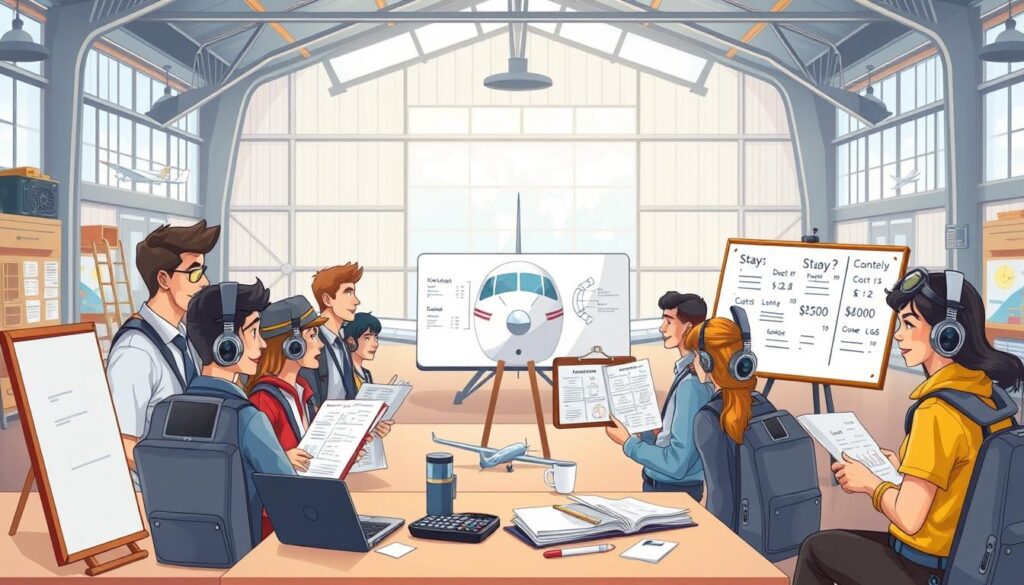
Ground School: What to Expect
Ground school is a key part of becoming a pilot. It’s where students learn the theory needed for flying. The classes cover important topics like how planes work and flying rules.
Curriculum Highlights
The private pilot training includes many subjects. Students learn about:
- Flight principles
- Weather phenomena
- Aircraft systems
- Navigation techniques
- FAA regulations
Hands-on activities, like using flight simulators, make learning fun. Courses can last from 8 weeks to more.
Study Materials and Resources
Good study materials are key for learning. Students get:
- Textbooks that meet FAA standards
- Online courses for easy access
- Practice exams to check progress
Using different materials helps students understand and prepare for tests.
Using AviatorPro for Online Ground Training
AviatorPro is transforming the way aspiring pilots engage with their online ground training, becoming an essential tool for those enrolled in a pilot school or those embarking on a comprehensive pilot training program. This innovative platform provides a robust collection of resources, from guided video tutorials to interactive quizzes, ensuring that students can grasp complex aviation concepts at their own pace. The user-friendly interface allows learners to navigate through course materials with ease, making the journey toward becoming a licensed pilot both convenient and enriching.
One of the standout features of AviatorPro is its ability to offer a structured curriculum that aligns with the requirements of various pilot schools. Students can customize their learning experience based on their individual needs, whether they are tackling basic aerodynamics or delving into advanced navigation techniques. This flexibility means that those in a pilot training program can fit their studies around busy schedules, balancing work, family, and flight hours without sacrificing the quality of their education.
As aviation technology continues to evolve, so too must the tools we use for training the next generation of pilots. AviatorPro stands at the forefront of this evolution, providing a modern approach to online ground training that meets the diverse needs of today’s flight students. By integrating technology with education, it ensures that learners not only gain the necessary theoretical knowledge but also feel truly prepared for the practical aspects of flying as they progress through their pilot training program.
Flight Training: How It Works
The flight training process is key to becoming a skilled pilot. It involves a lot of practice in different flying skills. This training makes sure students can fly safely and well.
Types of Flight Maneuvers
Students learn many flying skills during training. These include:
- Takeoffs and landings
- Turns around a point
- Stalls and recovery techniques
- Emergency procedures
- Navigational exercises
Training Hours Required
To get a Private Pilot Certificate, you need at least 40 hours of flying. But, most students take 60 to 80 hours to feel really ready. If you want to fly even more:
| Certificate | Required Flight Time | Average Duration to Achieve |
|---|---|---|
| Private Pilot | 40 hours | 3 months |
| Commercial Pilot | 250 hours | 3 months (post Private Pilot) |
| Airline Transport Pilot | 1,500 hours | Varies |
Role of the Flight Instructor
Flight instructors are very important in training. They do many things, like:
- Teaching in a way that fits each student
- Checking how well students do in flying
- Making sure everything is safe and follows rules
- Helping with the best ways to fly
Having a good relationship with your instructor helps a lot. Good communication makes learning easier and builds confidence.
Preparing for the FAA Written Exam
To pass the FAA written exam, pilots need to study hard and smart. Knowing the exam’s layout is key to good preparation.
Exam Format and Structure
The FAA written exam tests your knowledge with multiple-choice questions. It has 40 to 100 questions and you need a 70% to pass. The exam lasts 2 to 3 hours, so managing your time well is important.
It covers many aviation topics. You must know about aerodynamics, flight planning, and aircraft systems. This knowledge is essential.
Study Tips and Resources
Good study habits can help you pass the FAA written exam. Here are some tips for studying well:
- Make a study plan with a focus on different topics each day. For example:
- Airspace classifications on Mondays
- Weather patterns on Wednesdays
- Aircraft performance calculations on Fridays
- Use the FAA Knowledge Test Guide to learn about the exam and its questions.
- Practice with exams from trusted sources. Aim for scores over 85% in three tests.
- Take notes in your own words and use pictures to help remember.
- Use different study materials like the ASA 2019 Private Pilot Test Prep book and Sporty’s Online Learn to Fly Course.
- Get various aviation handbooks to mix up your studying.
After the exam, you’ll get a score report. Keep it for future use, like when you’re ready for checkrides. Passing the FAA written exam takes hard work and a solid plan.
Scheduling and Completing Flight Tests
Scheduling flight tests is key in the FAA practical exam prep. You need to show you can fly well in various tests given by an FAA examiner. Passing a pilot checkride is vital to get your private pilot license.
Types of Practical Tests
The FAA flight test checks your skills in both talking and flying. It includes:
- Private Pilot Checkride: This tests your ability to fly safely as a private pilot.
- Instrument Rating Test: Needed if you want to fly by instruments (IFR).
- Multi-Engine Rating Test: This focuses on flying multi-engine planes.
Tips for Success
Getting ready is essential for your pilot checkride. Here are some tips to help you pass:
- Study the FAA Practical Test Standards for your checkride well.
- Practice all flight maneuvers you need to know.
- Do mock checkrides with your instructor to get used to the test.
- Make sure you know a lot about aviation rules and how to fly.
What to Expect on Test Day
On test day, be ready for both the oral and flight parts. Remember:
- Don’t be late by more than 30 minutes for your test.
- Bring your FAA Tracking Number (FTN) and any needed papers.
- Be ready to answer lots of questions on aviation before you fly.
Post-Training Opportunities for Private Pilots
Private pilots have many chances to grow their skills after training. The aviation world keeps changing, and it’s key to stay up-to-date. Pilots can explore continuing education, get more certifications, or join pilot groups.
Continuing Education
Keeping up with aviation education is vital for pilots. They can take part in seminars, online classes, or workshops. These help pilots learn about new rules and tech, making them safer and more skilled.
Additional Certifications
Getting more certifications can open up more career paths. Key ones include:
- Instrument Rating
- Commercial Pilot License
- Certified Flight Instructor (CFI)
These certifications let pilots handle more complex flying. They make pilots more valuable and sought-after in the job market.
Joining Pilot Organizations
Being part of pilot groups has many perks. It connects pilots with others, offers resources, and networking chances. Groups like AOPA and EAA help pilots find events, scholarships, and training to advance their careers.
| Opportunity | Description |
|---|---|
| Continuing Education | Courses to maintain proficiency and update on regulations. |
| Certifications | Instrument Rating, Commercial License, or CFI to broaden skills. |
| Pilot Organizations | Networking, resources, and event access through groups like AOPA. |
Maintaining Your Private Pilot Certification
Keeping your private pilot certification up to date is key for safety and following rules. Pilots must do a biennial flight review (BFR) every 24 months. This review includes one hour of ground school and one hour of flying with a certified instructor.
Currency Requirements
To fly legally, you need a valid ID and an FAA medical certificate. If you’re under 40, your medical is good for five years. Over 40, you need a new one every two years. Also, to fly with passengers, you must do three takeoffs and landings in the last 90 days. The FAA tracks daytime and nighttime flying separately.
Renewal Process
To renew your pilot license, pass a medical exam and send the right paperwork to the FAA. A private pilot’s license doesn’t expire, but you must stay current. You can also take extra training or seminars to stay updated.
Continuing Education Options
Staying in school is essential for private pilots. Join workshops, go to aviation events like Oshkosh, and learn about new trends. This keeps your skills sharp and helps you stay safe and professional.

